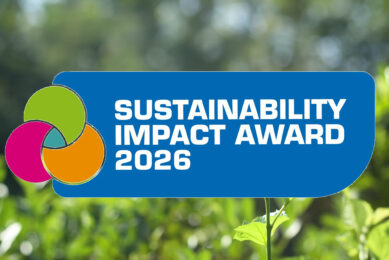Microbiome stability in modern broilers

Optimal intestinal health, a better welfare and thus a higher sustainability of poultry production can be achieved by successfully maintaining stability of the gut microbiome.
Knowledge about the gut microbiome has increased tremendously in both humans and animals. For humans, the microbiome is approximately 1.5kg of bacteria that we carry every day. These bacteria and other micro-organisms part of the gut microbiota are mainly favourable to humans and are acting at the interface of the external world and our body. This microbiome has an unbelievable impact, not only on the digestive system, but also on the rest of the human or animal body. It influences the immune system, the central nervous system and can as such even affect mood and behaviour.
In poultry, there is a large focus on achieving a healthy gut since this is the key engine for growth, health and welfare of the birds. Robustness of the microbiome is closely linked to gut health, therefore taking good care of the chickens’ gut microbiota should be an integral part of management practices.
Functional potential of the microbiota
Microbiome stability can be defined as the optimal robustness over time between the beneficial bacteria and the pathogenic or non-beneficial bacteria in the intestinal tract of the birds. It supports optimal intestinal health, a better welfare and thus a higher sustainability of poultry production (Figure 1).
Figure 1 – Factors which can increase the risk of losing microbiome stability.

During it’s life, a chicken will face many challenges to maintain its microbiome stability. The former way to manage pathogens and thus the microbiota by using massive amounts of chemicals (zinc, copper, antibiotics) is over. At the same time, it is still a dream to get rid of pathogens in modern poultry production, so viable alternatives are needed. Additionally, the use of highly digestive raw materials is becoming increasingly inefficient from an economic standpoint. As a result, the strategic nutritional formulation is moving to less security and safety for the birds. We are now seeing more use of distiller’s dried grains with solubles (DDGS), sunflower meal, rapeseed meal or even peas instead of soy meal and corn. So not only are there less chemicals accepted by the consumers and authorities, but also economically, attention is given to the alternative raw materials sourced, for example, as a by-product. Ultimately, the pathogens are still there, and the physiology of the birds is even more challenged with higher growth rate and higher feed intakes. Genetic enhancements are ongoing, but eventually it takes time for birds to develop and mature their physiological enzyme system, immune system, digestive structure of villi and microvilli.
A new focus on holistic approaches
Maintaining microbiome robustness by making sure the digestive tract is populated with a diverse and functional microbiota is crucial for the chicken to withstand the challenges as a production animal. Solutions are needed which can help to achieve this goal. The former way of nutritional and farm management was to get rid of all pathogens. Nowadays the focus is on more holistic approaches for obtaining a robust gut microbiota that provides protection against pathogens and shapes the digestive physiology and the immune system in beneficial ways. Robustness depends on the diversity of the microbiome, so it is not enough just to have the presence of a few different beneficial microbes, like cultivating hectares of only one crop. Too little diversity will make the microbiota more susceptible to challenges, and thus highly unstable.
One can say that if we introduce changes in the life of the chicken (like feed transition as a key example), there is a lack of a plan B to adjust to this new reality because there are simply too few good bacteria to carry the torch. On the other hand, having a good diversity of different microbes with beneficial properties allows to adjust, adapt and take advantage of the different attributes of the variety of favourable species and strains. A lack of diversity makes the whole digestive system extremely fragile and makes it very susceptible to any change.
In that sense, the ideal is to achieve a microbiota in the gut which looks like a forest: much vegetation, a lot of diversity of herbs, fungi and plants, and ultimately huge trees which are dominating the rest of the vegetation, making it difficult for the bad herbs to become dominant. This is achieved by the natural competition on sun, earth and water and their established dominance (Figure 2).
Figure 2 – Maintaining function and diversity of microbiome, a paradigm shift in modern broilers

A high diversity provides more functional potential to the microbiota. The more diverse, the more robust and stable it will be. The favourable bacteria will be so dominant that they will de facto prevent pathogenic bacteria to multiply. Just like the trees in the forest are dominating the other vegetative species, the established dominance dictates the natural competition.
We are at the very beginning of a new era for knowledge and understanding of the chicken’s microbiome. We are scratching the surface of something bigger. However, what we know from other species, including humans, can make us optimistic. The progress will be fast and it will undoubtedly allow the development of new solutions which are better accepted by modern poultry production and by consumers.
References available on request
Authors: Christophe Bostvironnois and Randi Lundberg, Chr Hansen











